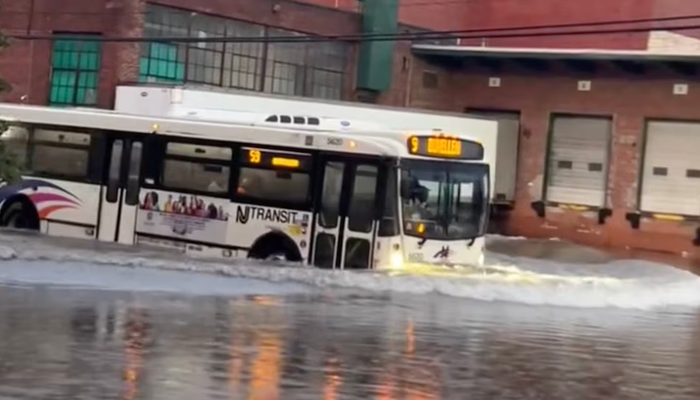NEW YORK: Two people died and major infrastructure was overwhelmed as flash flooding and severe storms battered the New York City area, particularly impacting parts of New Jersey, from Monday night into early Tuesday. The intense weather caused massive disruptions across airports, subway stations, and roadways, highlighting the region’s vulnerability to climate-driven extreme weather.
Record Rainfall in Manhattan Overwhelms Transit Systems
Central Park recorded over 2 inches (5 cm) of rain in just one hour, the second-highest amount ever recorded in a 60-minute span, according to New York City Mayor Eric Adams. “I probably don’t recall seeing that level of rain before,” Adams said during a press briefing.
Footage shared online showed water gushing through subway station ceilings, creating chaotic scenes for commuters on Monday evening. One dramatic clip revealed a geyser erupting through a station on Manhattan’s West Side, flooding the platforms and halting service.
Rohit Aggarwala, the city’s Environmental Protection Commissioner, said the storm dumped over 4 inches of rain per hour at its peak—more than double the 1.75-inch capacity of the city’s outdated sewer system. “The system wasn’t built to handle this kind of storm,” Aggarwala added.
The Metropolitan Transportation Authority (MTA) reported multiple service suspensions and delays due to water damage, while LaGuardia and JFK airports saw numerous flight cancellations. Travelers across the region faced long delays as roads and railways flooded, leaving thousands stranded during rush hour.
Netanyahu’s Coalition Wobbles as Ultra-Orthodox Party Quits Over Draft Bill
New Jersey Declares State of Emergency After Deadly Flooding
Across the Hudson River, New Jersey bore the brunt of the storm’s deadly impact. Governor Phil Murphy declared a state of emergency late Monday and confirmed that two people had died in Plainfield, after their vehicle was swept away in floodwaters and later found submerged.
Murphy stated that some areas saw as much as 6 inches (15.25 cm) of rainfall in less than two and a half hours, a rate that overwhelmed local drainage systems. “Some towns experienced flooding for the first time,” he said. “That’s the new reality. Climate change is increasing both the frequency and intensity of these events.”
Emergency crews conducted multiple rescue operations throughout New Jersey, especially in areas like Bergen and Essex counties, where rivers swelled rapidly and spilled into residential neighborhoods. In Westchester County, just north of NYC, first responders rescued stranded drivers from submerged vehicles as major highways shut down.
Climate Change Blamed for Extreme Weather Patterns
The flooding highlights a broader concern voiced by both officials and climate experts: climate change is reshaping weather patterns across the U.S., with the Northeast facing more frequent, intense rain events. Governor Murphy directly linked Monday’s deadly flooding to global warming, warning that such storms could become “the new normal” if emissions remain unchecked.
The National Weather Service confirmed over 5 inches (12.7 cm) of rainfall in Rockland County, and forecasts warned of additional rain and localized flooding later this week.
Officials urged residents to remain vigilant, prepare emergency kits, and avoid driving through standing water. “We’re entering a new era of climate risks,” said Mayor Adams. “And our infrastructure has to catch up fast.”
Follow us on Instagram, YouTube, Facebook,, X and TikTok for latest updates
